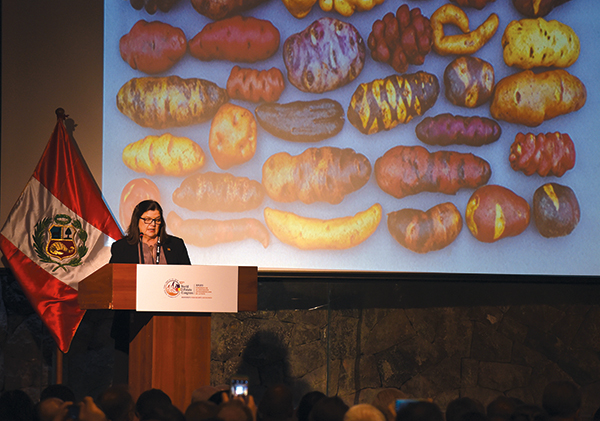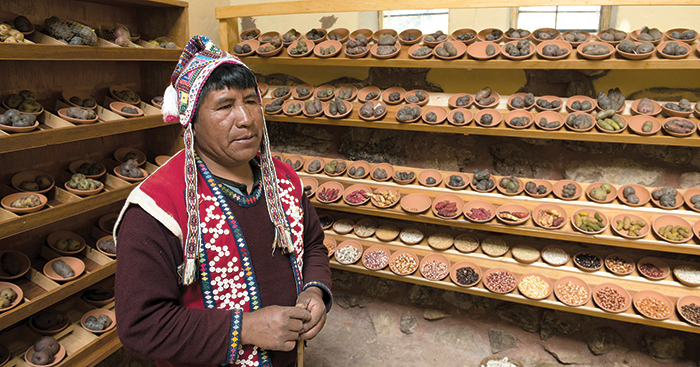
Barbara H. Wells, director general of the International Potato Center, speaks during the first plenary session of the World Potato Congress in Cusco, Peru.
In the Inca mythology, the city of Cusco was considered to be the navel of the Inca universe. In the native Quechua language, the word Cusco translates into “belly button of the world.”
Seven hundred years ago, Cusco was the center of the Inca universe, considered to be a sacred place. But this past May, the city of 400,000 became the center of the potato universe.
For three days, May 28-31, the 10th triennial World Potato Congress (WPC) brought more than 800 researchers, farmers, equipment and chemical suppliers and non-governmental organization officials from 49 countries to the thin-air climes of Cusco, Peru. They came to discuss global food security, nutrition and food waste and how to feed more than 9 billion people in the year 2050 while facing the threat of climate change and incorporating sustainable agricultural practices.
Not surprisingly, Peru had the highest attendance at the WPC with 226 people. China was second with 81, the U.S. third with 78 and Canada fourth with 48.
The choice of Cusco for the WPC seemed appropriate and somewhat overdue given that Peru is the origin of the potato and home to more than 3,000 varieties of wild potatoes, the most biodiverse collection of potato varieties in the world.
Adding to this year’s WPC mix, the 28th Congress of the Latin American Potato Association was held concurrently in Cusco.
Issues of Growing Importance Globally
This past January, Romain Cools replaced David Thompson as the president and CEO of the World Potato Congress.
Cools said that the WPC seeks to serve both developing countries and developed countries with a premium network that helps to bring both systems together.
“If you’re creating a group and you bring your people together in a kind of cooperative way and with the help of the developed countries, with their knowledge and technologies, listening to the customs and traditions of the local villages, local potato growers, the combination of both can increase the quality of the crop, the quantity of the crop and also the added value of the crop, and this is what we try to do in the WPC,” Cools said following the WPC closing ceremony in Cusco.
Along with the issues of bio-diversity, food security and business covered in this year’s meeting, Cools said that reducing food waste and a continuous availability of nutritious food are two more issues of growing importance globally, particularly as the population on the Asian continent becomes more urbanized and Africa’s population continues to grow.
Andre Devaux, International Potato Center’s Latin American and the Caribbean regional director, said that in the 1990s the dominant thinking was that by increasing food production, you could eliminate food insecurity and poverty. However, there remained other issues, according to Devaux.
“It’s good to increase production, but the farmers are not able to sell their potatoes,” Devaux said. “This is why we are looking at linking small-scale farmers to high-value markets for them to improve added value to their products.”
Devaux said that there’s growing emphasis on nutrition in foods.
“The focus on nutrition became much more important during the last year. So there was an evolution responding to the poverty and food insecurity to production linking to markets and to nutrition,” he said. “Malnutrition doesn’t reduce as fast as poverty.”
He said that 43 percent of children in Peru’s rural areas currently suffer from anemia.
Devaux said that potato is the third food crop at the global level, with rice and wheat numbers one and two, respectively.
“Potato is consumed, as a staple, by more than 1 billion people,” he said.
Plans are already underway for the 11th World Potato Congress in 2021 in Dublin. Following the meeting in Ireland, the WPC will begin meeting biennially.
Slideshow – Hover to see the description
[slideshow_deploy id=’2743′]


